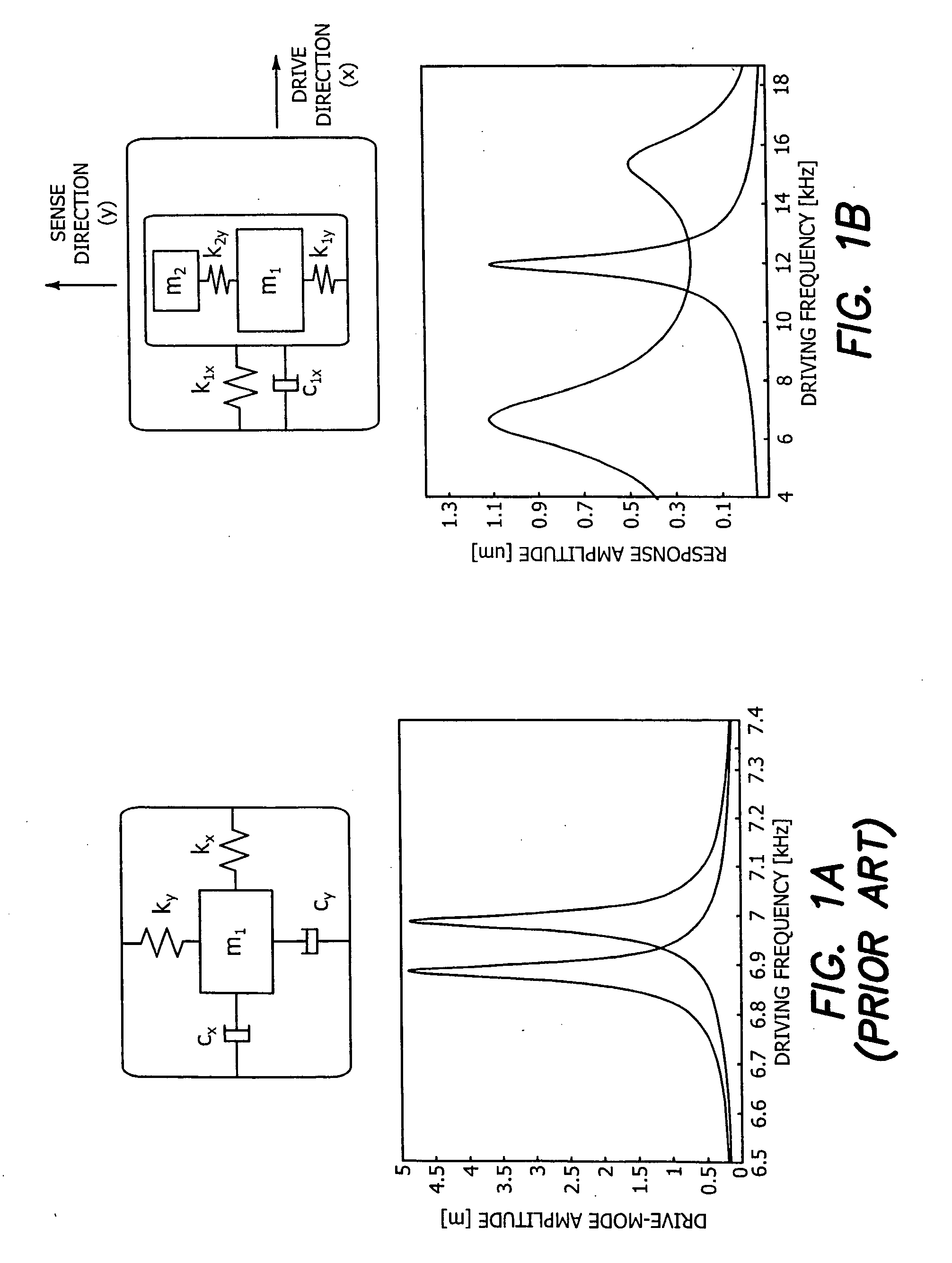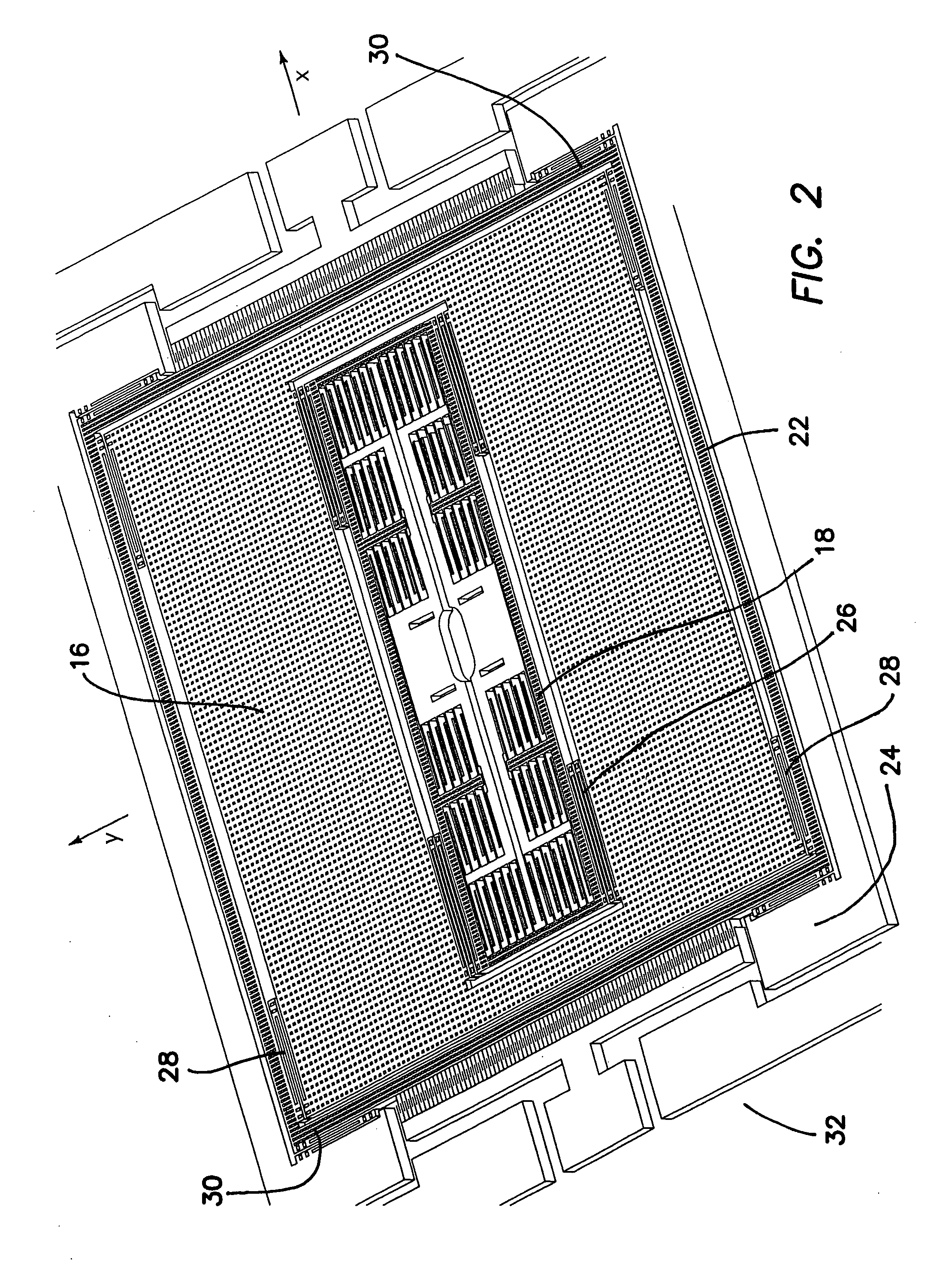Robust micromachined gyroscopes with two degrees of freedom sense-mode oscillator
a micro-machined gyroscope and sense-mode technology, applied in the field of micro-machined gyroscopes, can solve the problems of limiting the performance, stability, and robustness of mems gyroscopes, and the tolerability of the current photolithography process and micro-fabrication techniques is inadequate compared to the requirements, and achieves improved sensitivity, narrow bandwidth, and high sensitivity.
- Summary
- Abstract
- Description
- Claims
- Application Information
AI Technical Summary
Benefits of technology
Problems solved by technology
Method used
Image
Examples
Embodiment Construction
[0032] The illustrated embodiment is a robust micromachined gyroscope 10 with a two degrees-of-freedom sense-direction oscillator 12. The gyroscope 10 differs from all existing micromachined gyroscopes: [0033] (1) In having a two-DOF sense-direction oscillator 12, forming an overall three-DOF vibratory dynamical system. Existing micromachined vibratory gyroscopes consist of a single-mass 1-DOF sense-direction oscillator, forming an overall two DOF dynamical system. [0034] (2) In providing a flat operation region between two resonance peaks in the frequency response curve of the two DOF sense-direction oscillator 12. Operating the device in the flat region ensures that the oscillation amplitude and phase are insensitive to parameter fluctuations. Thus the device has improved robustness to fabrication variations, fluctuations in residual stresses, variations in elastic modulus from run to run, and also thermal fluctuations throughout the operation time. [0035] (3) In utilizing dynamic...
PUM
 Login to View More
Login to View More Abstract
Description
Claims
Application Information
 Login to View More
Login to View More - R&D
- Intellectual Property
- Life Sciences
- Materials
- Tech Scout
- Unparalleled Data Quality
- Higher Quality Content
- 60% Fewer Hallucinations
Browse by: Latest US Patents, China's latest patents, Technical Efficacy Thesaurus, Application Domain, Technology Topic, Popular Technical Reports.
© 2025 PatSnap. All rights reserved.Legal|Privacy policy|Modern Slavery Act Transparency Statement|Sitemap|About US| Contact US: help@patsnap.com



